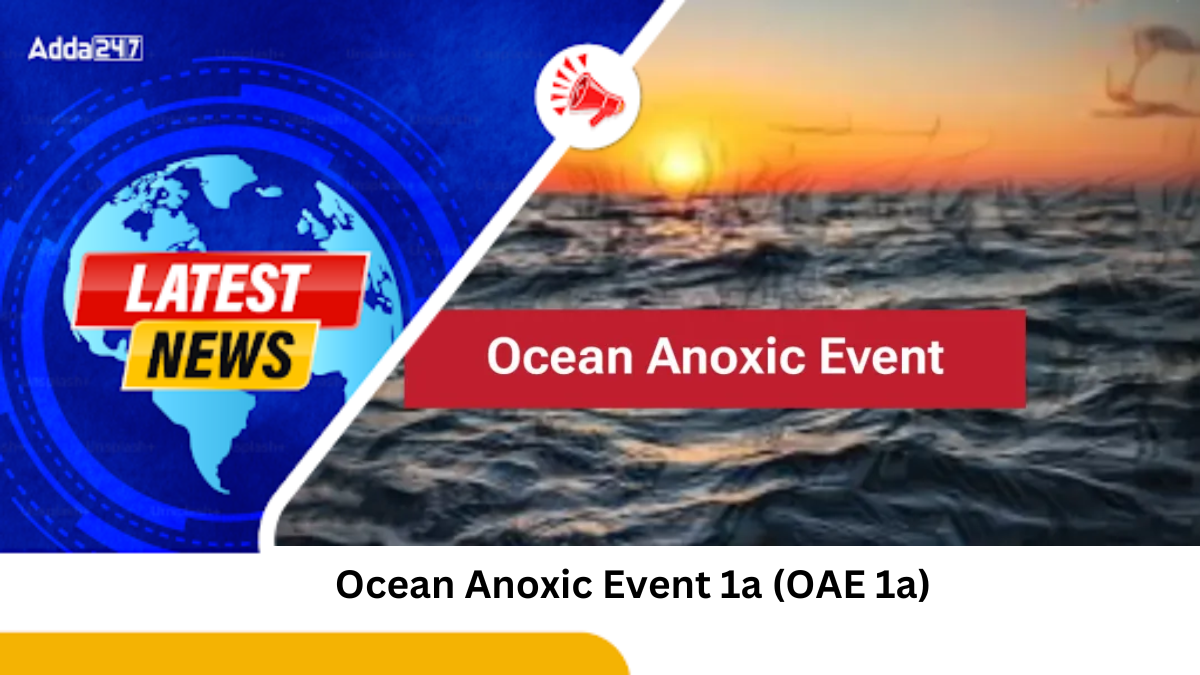The Ocean Anoxic Event 1a (OAE 1a), which occurred around 120 million years ago during the early Aptian, was a significant climatic and environmental event caused by massive volcanic eruptions that released large quantities of CO₂, triggering global warming and oceanic anoxia. The event severely disrupted marine ecosystems, leading to the extinction of several species, particularly plankton, and the formation of organic-rich black shale deposits. The study of this ancient event provides valuable insights into current climate concerns, with modern parallels in human-induced global warming and the potential risks for marine life.
Causes and Effects of OAE 1a
OAE 1a was initiated by volcanic eruptions, particularly from the Ontong Java Nui complex, which released significant amounts of CO₂ into the atmosphere, leading to a greenhouse effect. This caused oceanic oxygen depletion, as carbon dioxide dissolved in seawater to form carbonic acid, which lowered oxygen levels, inhibiting most aerobic life forms. The result was the creation of anoxic marine basins, such as the Black Sea and the Cariaco Basin, where oxygen levels were nearly absent, leading to the preservation of organic-rich layers, known as black shales.
The Study’s Key Findings in East Asia
Recent research focusing on the lacustrine records from the Jiaolai Basin and Lingshan Island in East China has extended our understanding of OAE 1a to continental ecosystems. The study observed drastic changes in palaeosalinity and anoxic conditions in lake systems, providing a terrestrial record of the event. The isotopic analysis and geochemical data show a sharp increase in organic carbon during this period, mirroring the disturbances in the marine carbon cycle. These findings offer insights into how extreme greenhouse conditions impacted continental lakes and contribute to understanding the broader environmental shifts of the early Aptian.
Modern Relevance and Parallels
The OAE 1a event serves as a warning for current climate trends, highlighting the dangers of increased CO₂ emissions and the resulting warming. The ancient warming and oxygen depletion events mirror present-day concerns about anthropogenic climate change, which could trigger disruptions in marine ecosystems and contribute to mass extinctions. Understanding past events like OAE 1a offers crucial lessons in preventing similar ecological crises in the future.
Summary of the news
| Key Points | Details |
|---|---|
| Why in News | Researchers studied East China’s lacustrine deposits to analyze the Aptian Oceanic Anoxic Event 1a (~120 million years ago), linked to global warming and oceanic oxygen depletion. |
| Event Name | Oceanic Anoxic Event 1a (Early Aptian Stage, ~120 million years ago). |
| Primary Trigger | Massive volcanic eruptions releasing large amounts of CO₂, causing global warming. |
| Key Consequences | Oxygen depletion in oceans, deposition of organic-rich black shales, and disruption of marine ecosystems. |
| Geographical Focus | East China (location of lacustrine deposits studied). |
| Modern Context | Parallels drawn with current CO₂-driven global warming, emphasizing the impact of carbon cycle disruptions. |



 Andrej Babis Sworn In as Czech Republic’...
Andrej Babis Sworn In as Czech Republic’...
 Lithuania Declares State of Emergency Ov...
Lithuania Declares State of Emergency Ov...
 Operation Sagar Bandhu — Indian Navy Sen...
Operation Sagar Bandhu — Indian Navy Sen...







